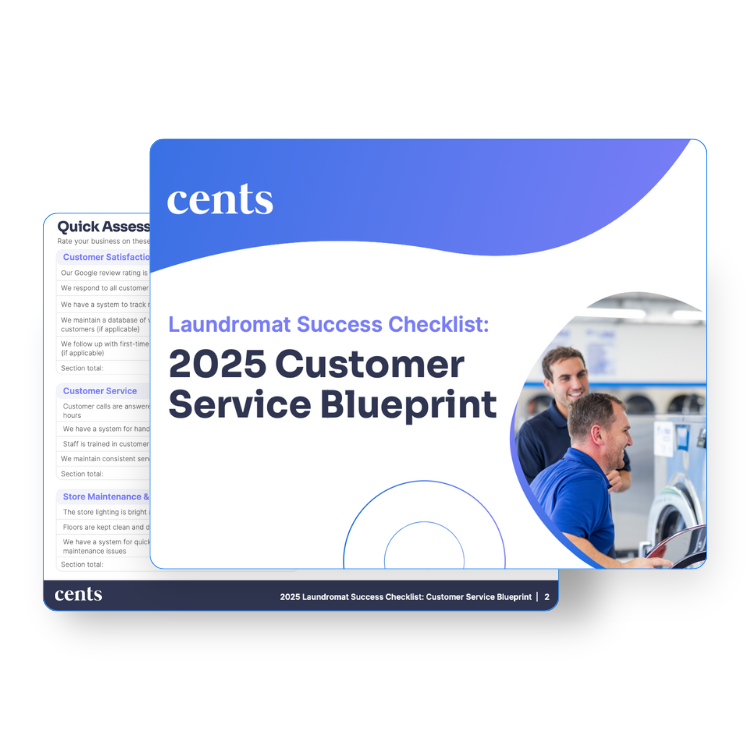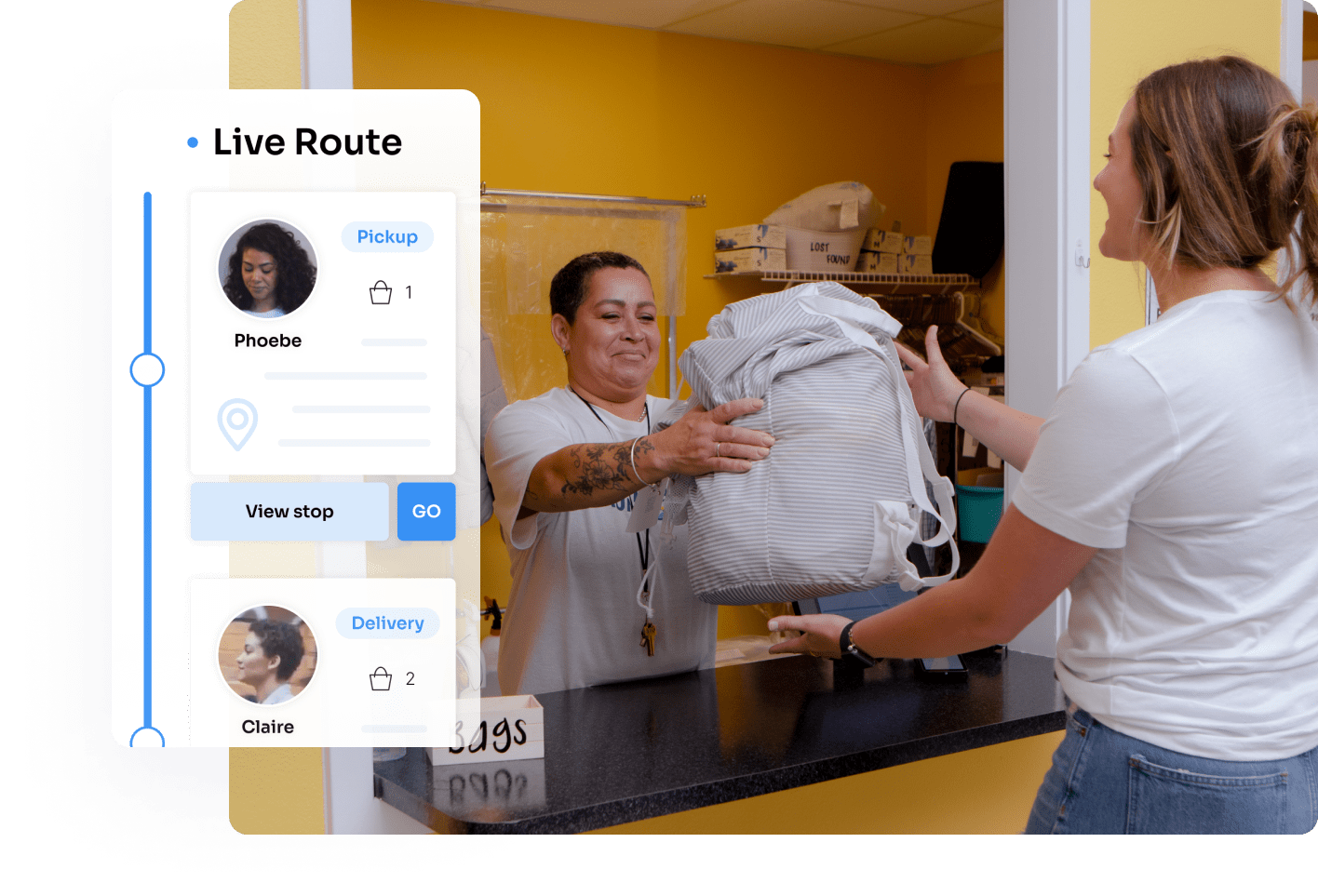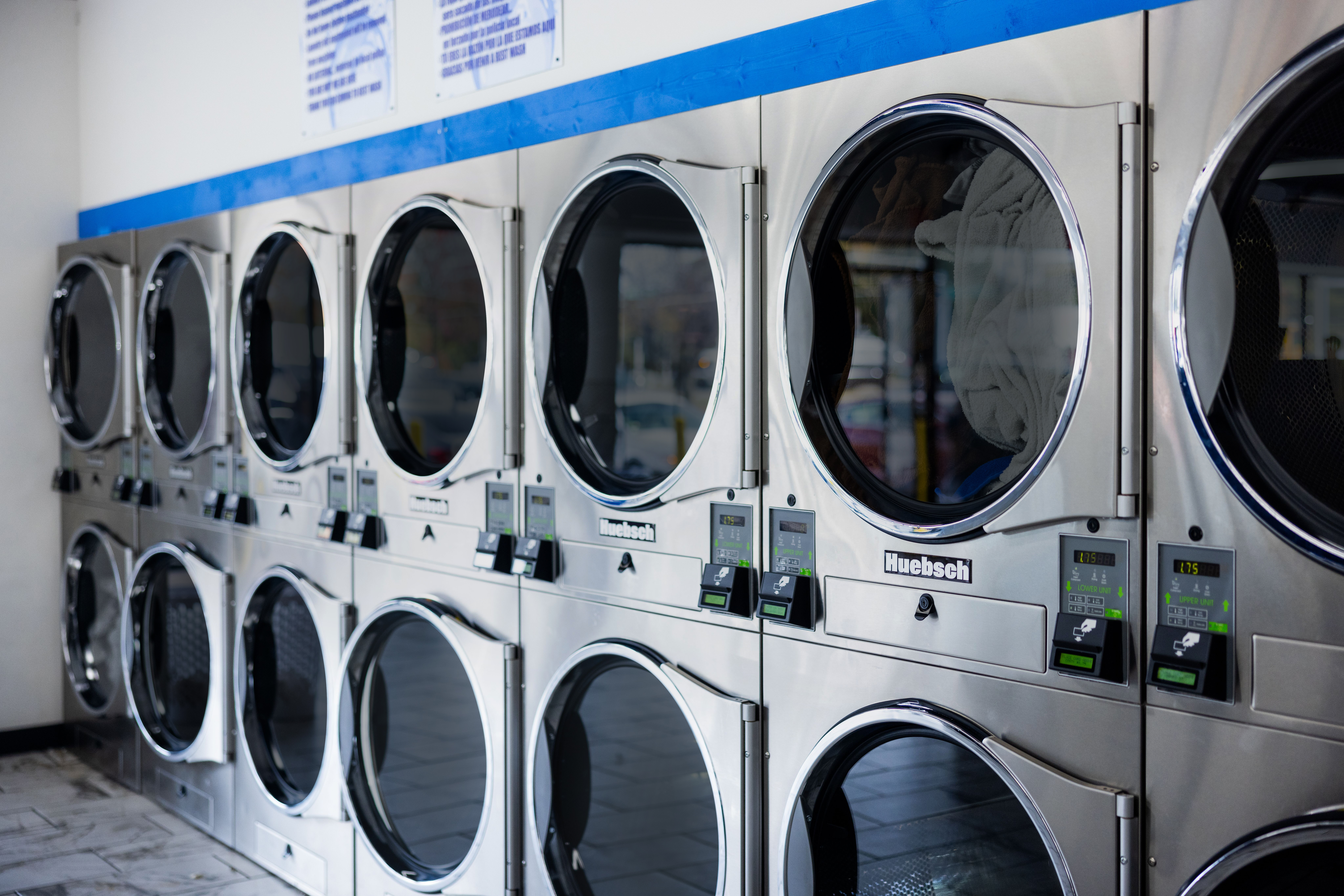Coin counting is a fundamental task in just about any laundromat—even modern laundromats that use digital management and point-of-sale systems. While it may seem tedious and time-consuming, more than 100 years of laundromats that came before you have tested and refined coin-counting methods to create the best practices used today.
For laundromat owners, particularly those new to the industry, getting to know these best practices will make life easier. Your accurate financial tracking and smooth business operations depend on it! This guide will provide an overview of both traditional and modern laundromat coin counting methods, helping new owners navigate this essential aspect of their business. We’re not reinventing the wheel, here; this is a straightforward, holistic guide to counting coins in the most efficient and accurate ways, based on a century of tried and true methods merging modern advancements.
Table of contents
Understand your profits with our custom laundromat profit calculator! Track all of our cash collections and expenses with our FREE calculator. Download at the button below.
History of laundromat coin counting
The evolution of coin counting in laundromats dates all the way back to the 1920s. In the early days, coin laundromat owners manually collected and sorted coins from machines—a time-consuming and error-prone task. This traditional method demanded significant time and effort, often requiring daily or weekly collections.
As the industry grew, so did the need for more efficient solutions. This is where mechanical coin sorters and counters came in, which started popping up in coin operated laundry businesses in the mid-20th century. These machines simplified part of the process, empowering owners to sort and count coins more quickly and accurately. The advantages were great, but these machines still required manual intervention and oversight, limiting their efficiency.
The real breakthrough came with the advent of electronic and digital coin counting systems in the early 2000s. These advanced machines sort and count coins and provided detailed reports, helping owners accurately track income without an added time investment. Innovations like rear-loading changers added an extra layer of security by keeping coins and currency in a secure vault room monitored by cameras.
Today, many laundromats opt for hybrid systems that accept both coins and digital payments, to accommodate our increasingly cash-less world, reflecting the shift towards a more cashless society. Bruce Walker of Wash It Kwik, for example, uses a card-based system that integrates with coin mechanisms, giving flexibility to customers while making collection day easier for him. The state of laundromat coin collections today creates new efficiency and bolsters security.
The evolution of coin counting hasn’t met its apex quite yet. Newer innovations like smartphone-based payments and fully automated systems that eliminate the need for physical coins altogether could be a widespread solution sooner than you may think. Experts like Hank Walter from Whale of a Wash predict the industry will continue moving towards a point where electronic payment systems will be universally accepted, making coin jams and manual collections a thing of the past.
The traditional coin collection method

In the early days, coin collection was characterized by a tedious, manual, and labor-intensive nature. Owners typically collected coins weekly, unless they were particularly high-traffic, necessitating daily collections in some cases. This process involved emptying each machine's coin box, usually during quieter times to minimize disruption and reduce security risks—a far cry from what modern investors imagine for self serve laundromat ownership.
Despite the more recent rise of electronic payment options, many laundromats continue to use traditional coin systems due to their simplicity and familiarity to customers. Maintaining a balance between traditional methods and newer technologies has been an effective strategy for many successful laundromat operators. By understanding and improving upon these traditional methods, laundromat owners can make their business easier to run and set up an experience that customers expect.
Modern coin collection methods
Automated coin counting has revolutionized laundromat operations for owners looking towards the future. These modern systems handle the sorting, counting, and recording of coins, reducing the manual labor involved and minimizing human error. These systems provide detailed reports, helping owners track income precisely and make smart business decisions.
Benefits of automated coin counting:
-
Efficiency: Reduces the time spent on coin collection.
-
Accuracy: Minimizes errors in counting.
-
Security: Decreases the risk of theft through secure, tamper-proof designs.
Choosing the right coin counting technology involves considering factors such as the volume of coins you process (or plan to), your budget, and ease of use of the system. For instance, systems that integrate with existing laundromat software can seamlessly track and report financial data without complicated set-up.
Bank deposits made easy
Automated coin counters can streamline the process of preparing bank deposits by neatly sorting and bundling coins. Gone are the days of manually rolling quarters, a major draw for investors looking for a passive business model.
A simplified tax season
Accurate records from automated coin counters make it easier to track revenue and prepare for tax season. Detailed reports can be directly used to support financial statements and tax filings, simplifying compliance with local regulations and making tax season less stressful.
Maintenance and troubleshooting for coin counters
Automated coin counters are a huge game changer for laundromat owners looking to save time—but only if they’re properly cared for. Regular maintenance is essential to keep your automated system operating smoothly. Proper upkeep will lead to longevity and reduce downtime. Here are the top tips.
Regular maintenance tips:
-
Clean regularly: Dust and debris can accumulate and cause malfunctions. Clean the machine's interior and exterior surfaces routinely.
-
Lubricate moving parts: Use manufacturer-recommended lubricants to keep gears and moving components in good working order.
-
Inspect for wear and tear: Regularly check for worn-out parts and replace them as needed to prevent breakdowns.
Common troubleshooting steps:
-
Error messages: Refer to the user manual for specific error codes and their solutions. Often, restarting the machine can resolve minor issues.
-
Coin jams: If coins are stuck, carefully open the machine according to the manual’s instructions and remove the obstruction. Ensure that only acceptable coin types are used to prevent future jams.
-
Inaccurate counting: If the machine is miscounting, recalibrate it following the manufacturer’s guidelines. Regularly check and clean sensors to maintain accuracy.
Maintenance and troubleshooting of automated coin counters are pretty simple. Even when minor issues arise, they’re still an incredibly convenient solution to incorporate into your laundromat management strategy.
Things to consider
Any investment you make to enhance your laundry business should be carefully pondered. Before making the move to automated coin collection, here are some important considerations you should be sure not to overlook.
Safe coin collection and handling practices
Safety is a major concern when handling coins in your laundromat. Smart owners vary their collection schedules to avoid patterns that predators could capitalize on. Use secure bags instead of buckets, have a partner present when collecting, and do so during non-peak hours to ensure a smooth and safe process. Additionally, install high-resolution cameras in and around your property to deter potential theft and collect evidence when necessary.
The fun part: Finding valuable old coins
Coin collection is a treasure hunt! Laundromats have been known to accumulate a variety of coins over time, including rare and valuable ones. Finding these coins is a fun, unexpected bonus that makes the traditionally tedious process a bit more entertaining. You can set aside your finds and later research them to find their value.
Legal and regulatory considerations
As a laundromat owner, you must learn the regulatory landscape under which laundry businesses exist. This includes compliance with local tax laws, accurate reporting of income, and adherence to safety regulations. Proper documentation and regular audits ensure that the business remains compliant and avoids potential legal issues. Stay informed about any changes in regulations that may affect the operation of coin-operated machines.
Future trends in coin counting

The evolution of coin counting has no end in sight! Driven by advancements in technology, laundromats are poised for an exciting future of innovation and exceeded customer expectations. Here are some key laundromat trends to watch:
-
Digital and contactless payments: The shift towards cashless transactions is growing, with many laundromats adopting systems that accept digital payments via smartphones and cards. This trend reduces the reliance on physical coins, saves time for owners like you, and enhances convenience for customers.
-
Integrated management systems: Modern laundromats are increasingly using integrated management systems that combine coin counting with real-time data analytics. These systems provide detailed insights into machine usage, revenue, and maintenance needs, helping owners optimize operations and improve profitability.
-
Enhanced security features: Future coin counting and payment systems will likely incorporate advanced security features such as biometric authentication and blockchain technology to prevent fraud and facilitate secure transactions.
-
Automated coin handling: The next generation of coin counters will offer even more automation, from self-cleaning mechanisms to advanced sorting capabilities that handle multiple denominations and foreign currencies seamlessly.
Common collection mistakes to avoid
Efficient coin counting is crucial for smooth laundromat operations, but there are common pitfalls that new owners should be aware of. Here are some tips to avoid these mistakes:
-
Inconsistent collection schedules: Establish a regular schedule for coin collection to prevent overfilled machines and potential theft. Avoid predictable patterns to enhance security.
-
Neglecting machine maintenance: Regularly clean and maintain coin counters to prevent malfunctions. Follow manufacturer guidelines for maintenance and calibration.
-
Ignoring data tracking: Utilize tools like Cents for real-time tracking of revenue and machine usage. Accurate data helps in making informed decisions and identifying discrepancies early.
-
Overlooking security measures: Implement security features such as high-resolution cameras and secure coin storage to prevent theft. Collect during less busy hours and use discreet methods.
-
Failing to train staff: Ensure that all staff are properly trained in using coin counting equipment and handling collections. This reduces errors and improves efficiency.
Conclusion
Efficient coin counting is fundamental to having a successful laundromat that doesn’t eat up your free time. Bringing in automated coin counting systems can enhance efficiency, accuracy, and security in your laundry business. By understanding common pitfalls and staying informed about the time-saving technology at your fingertips, laundromat owners like you can optimize their operations and ensure smooth financial management. Automated coin counting and streamlined business management tools are the future of successful laundromats!
Understand your profits with our custom laundromat profit calculator! Track all of our cash collections and expenses with our FREE calculator. Download at the button below.
.png)

-3.png)









